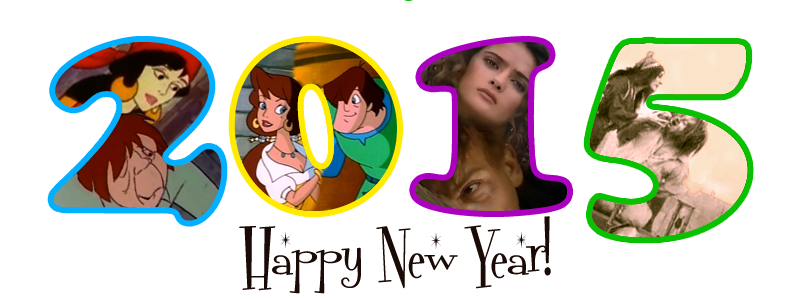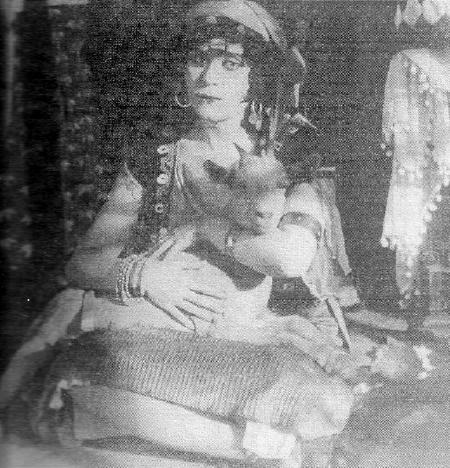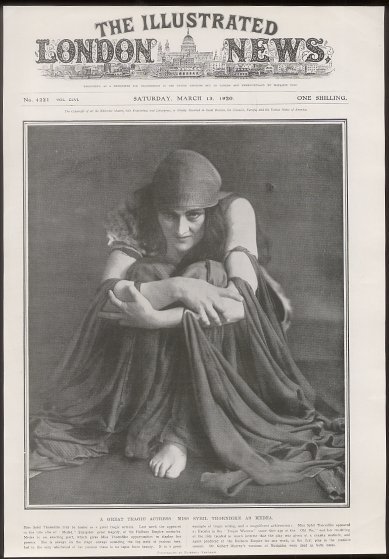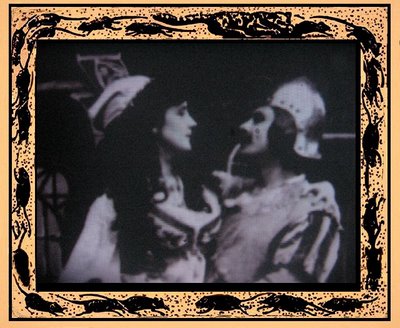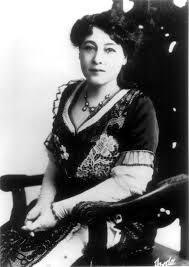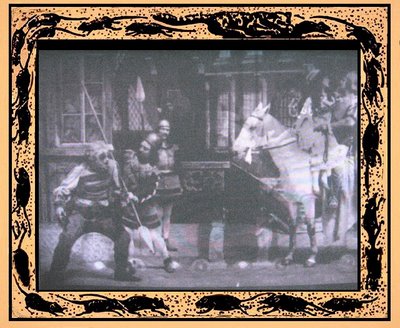Let’s consider a trend with Lost Films. All the films seem to make Esmeralda the main character. Every film but the 1911 version refereed to Esmeralda in the title and every film but the 1905 version had a prominent actress playing Esmeralda.
Given that most of the films of Hunchback favor Quasimodo as main character would it have made a difference if the four last films were available today? Might have help a little bit considering the 1923 version was originally a star vehicle for Pricilla Dean before Lon Chaney made it his picture. That’s right I think it’s pretty much Chaney’s doing that made the role of Quasimodo the point of focus for the films. You have to really wonder if the film had been Dean’s movie would Hunchback have had the same number of films and enjoyed the some film legacy.
It’s just such a interesting trajectory the focus that Hunchback films have taken, first focusing on the young and sometimes tragic Gypsy Dancer to the deformed often tragic hunchback. And when you consider the first four films were all Esmeralda based till Chaney changed it you have to really blame Chaney for it seeing as he had a lot to do with the 1923 version.
Howver there is at least ONE existing films version is known for the actress who plays Esmeralda.
Next Hunchback version the 1997 version called Hunchback and commonly known as the Salma Hayek version
The last lost Hunchback film was made a year before the Lon Chaney version in 1922. It was called Esmeralda and was directed Edwin J Collins. It was the first British version. It starred stage trained British actress, Dame Sybil Throndike as Esmeralda and stage actor Booth Conway as Quasimodo. Frollo was played by Annesley Healy and Phoebus by Arthur Kingsley.
Throndike was a distinguished actress who played many various roles like Lady Macbeth, Lady Dedlock and Hester Prynne to name a few. Thorndike, however was nearly 40 when she played Esmeralda and not a typical classical beauty. So one might think she got the role due her established film career but she had only started acting in films a year prior in 1921. The thought is that this movie was based on one her plays, which speaks to her acting skills. Esmeralda however is not one of her seminal films roles. Little else is known about this movie.
For the Month of January, we are going to look at the Lost Hunchback of Notre Dame films. What is a Lost Film? A Lost Film is a film that in no longer known to exist in any studio, private collection or public archives. Most of the films that were made between 1894 to 1930 are lost. In total there are four lost Hunchback films and since we have four Tuesdays this month, let’s jump in.
The first film was simply called Esmeralda. It was made in 1905 and was made in France. It was only about 10 minutes in length. It starred Denise Becker and Henry Vorins. Both actors have very little distinction, though Vorins did go to direct.
Esmeralda has a few distinctions. It was the first film version of the Hunchback of Notre Dame. The second is its director.
Esmeralda was directed by the first women film director ever, Alice Guy-Blanché as well as Victorin-Hippolyte Jasset. Between 1896 to 1920, Guy-Blanché directed 1000s of films. She also pioneer cinema. She was the first person to use film as narratives. She made her first film in 1896 at the age of 21 called La Fée aux Choux (The Cabbage Fairy), which is not lost.
She invented the role of director and is credited with the concept of going on location. She also experimented with sound syncing, color tinting, interracial casting and special effects. She founded own studio in New Jersey called Solax. It was the largest pre-Hollywood studio in America. Solax closed in 1922 due Hollywood keeping film costs down.
Sadly, very little know about the 1905 version Esmeralda. Judging from the pictures it looks like Phoebus is a character but no actor in credited. Some film historians credit Esmeralda as the first narrative film as well as the first horror film. Which is pretty cool. Even if Hunchback isn’t a piece of horror literature.
Further Reading on Alice Guy-Blanché;

